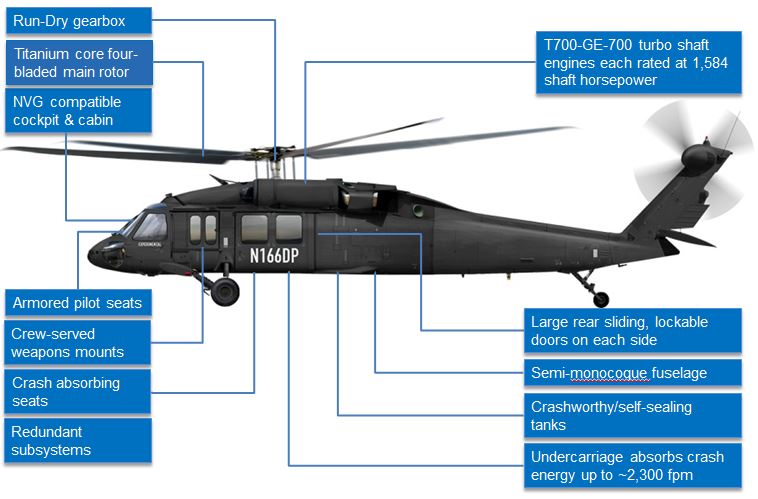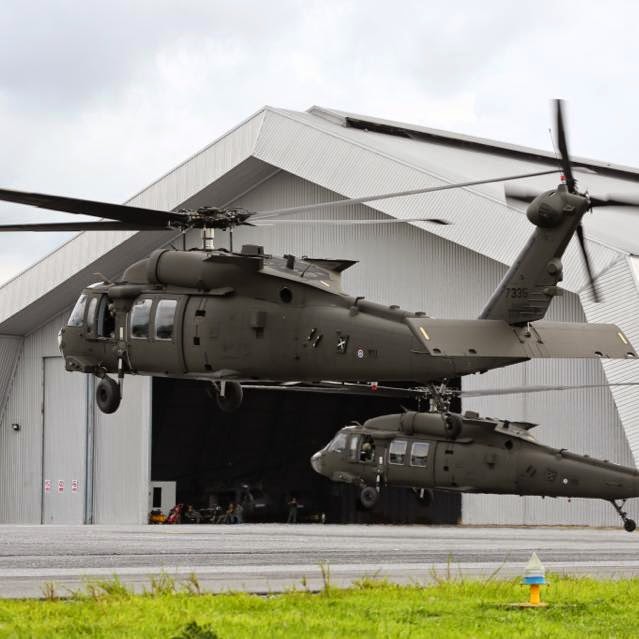Flying High: UH 60 Helicopter Safety Protocols You Should Know
Flying High: UH 60 Helicopter Safety Protocols You Should Know
Blog Article
Browsing Uh 60 Helicopter Rules and Compliance Demands

Regulatory Structure Review
The regulatory framework governing UH-60 helicopter operations incorporates a complex set of standards and regulations established by air travel authorities. These regulations are designed to ensure the effective and secure procedure of UH-60 helicopters in different settings. The Federal Aeronautics Administration (FAA) plays a main function in developing and enforcing these regulations, which cover a wide variety of functional elements, consisting of airworthiness requirements, pilot credentials, upkeep requirements, and functional procedures.
Conformity with these policies is vital for helicopter operators to keep the greatest levels of safety and functional stability. Failure to stick to these regulations can cause severe repercussions, consisting of crashes, injuries, and governing sanctions. Helicopter drivers need to stay informed about the most recent regulatory advancements and make certain that their operations are in complete conformity with all applicable rules and requirements.
Airworthiness Evaluations and regulations
Amidst the governing structure regulating UH-60 helicopter procedures, a critical emphasis exists on conformity with Airworthiness Directives and carrying out extensive examinations to maintain security requirements and operational integrity. Airworthiness Regulations (Advertisements) are issued by aeronautics authorities to attend to dangerous problems in airplane, including the UH-60 helicopter, and mandate particular actions to be taken by operators or owners. Compliance with ADs is necessary, and failing to follow these directives can result in significant repercussions, including grounding of the airplane.
Regular inspections are paramount to making sure the airworthiness of UH-60 helicopters. These examinations encompass a range of checks, from regular everyday assessments performed by pilots prior to and after trips to extra thorough arranged upkeep assessments brought out by licensed mechanics. Furthermore, special inspections may be needed based upon specific problems or occurrences. By adhering to a rigorous assessment program, drivers can find and address prospective problems without delay, thus improving the safety and reliability of UH-60 helicopter operations.
Pilot Qualifications and Training

Pilot training for UH-60 helicopters is comprehensive and covers a wide variety of subjects, including airplane systems, emergency procedures, navigating, and mission-specific training. Furthermore, pilots undertake simulator training to practice various emergency situation situations in a controlled setting. This training assists pilots develop the necessary skills to handle tough circumstances efficiently.


Moreover, ongoing training and professional advancement are crucial for UH-60 pilots to remain existing with the current laws, technology, and best techniques. By purchasing pilot credentials and training, drivers can improve safety, enhance performance, and guarantee conformity with governing demands in the operation of UH-60 helicopters.
Operational Limitations and Demands
Pilot certifications and training work as the structure for comprehending the operational constraints and demands connected with UH-60 helicopter procedures (uh 60). These operational constraints are placed in place to ensure the safety and security of the staff, travelers, and the airplane itself. Operational constraints may consist of aspects such as weather problems, weight restrictions, altitude constraints, and functional boundaries. It is critical for pilots to be skilled in these constraints to make educated choices during trip operations. Furthermore, conformity requirements, such as adhering to certain flight paths, interaction protocols, and emergency situation procedures, are vital for maintaining operational safety and security and regulatory conformity. Pilots must remain current with all operational constraints and requirements with normal training, briefings, and examines to minimize risks and make sure effective and safe UH-60 helicopter procedures. By prioritizing adherence to these operational standards, pilots can boost the overall security and performance of their missions while supporting regulative standards.
Emergency Procedures and Conformity Screening
Effective emergency treatments and thorough conformity screening are critical parts of keeping functional security and regulative adherence in UH-60 helicopter operations. Emergency treatments incorporate methods for different situations, including engine failings, fires, hydraulic problems, and much index more. Pilots and crew participants have to be skilled in these procedures to react promptly and properly in emergencies. Normal conformity testing ensures that the helicopter fulfills all regulative demands stated by aviation authorities. This screening involves thorough inspections, checks, and analyses to verify that the airplane is airworthy and in compliance with all applicable laws.
Compliance screening next page also reaches tools onboard the UH-60, such as communication systems, navigating tools, and security equipment. Guaranteeing that all tools is functioning properly and fulfills regulatory requirements is essential for risk-free procedures. In addition, conformity screening may entail simulations of emergency situation circumstances to assess the staff's reaction and the helicopter's performance under anxiety. By focusing on emergency situation procedures and compliance screening, UH-60 operators can reduce threats and demonstrate their commitment to security and governing conformity.
Conclusion
In conclusion, adherence to regulatory framework, compliance with airworthiness directives, pilot qualifications and training, operational constraints, and emergency situation treatments are necessary for browsing the laws and needs of running a UH-60 helicopter. uh 60. It is vital for drivers to focus on security and guarantee full compliance with all relevant policies to preserve the airworthiness and functional stability of the aircraft
Navigating the governing landscape bordering UH-60 helicopter operations demands a nuanced understanding of the intricate internet of regulations and conformity demands.Conformity with these policies is vital for helicopter operators to keep the highest possible levels of safety and functional stability.Amidst the regulatory structure regulating UH-60 helicopter operations, a critical emphasis exists on conformity with Airworthiness Directives and carrying out complete inspections to maintain safety requirements and operational dependability.Effective emergency situation procedures and comprehensive conformity testing are critical parts of maintaining functional security and governing adherence in UH-60 helicopter operations. Normal compliance screening guarantees that the helicopter fulfills all regulative demands established forth by air travel authorities.
Report this page